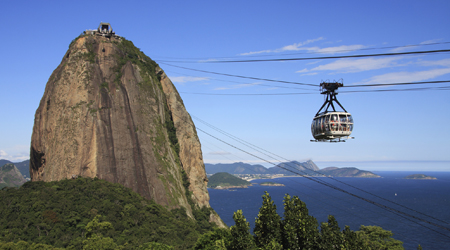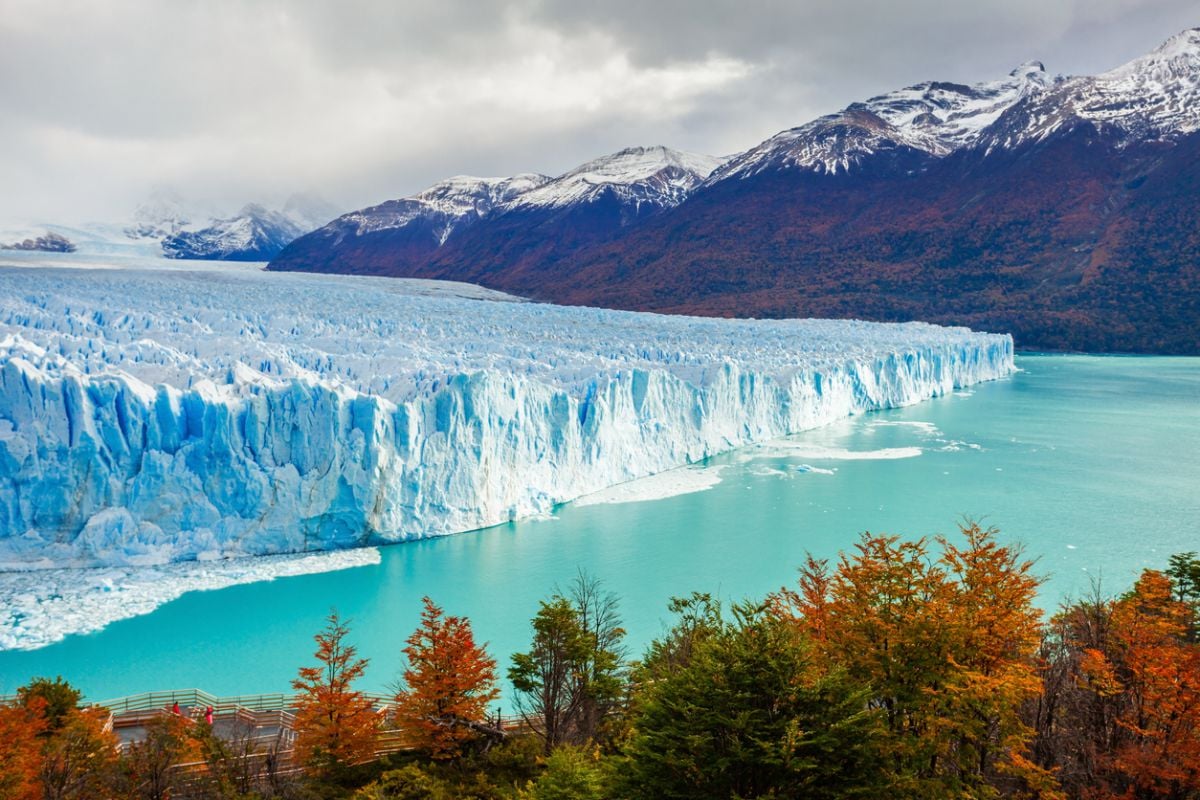Brazil Travel Guide to Top Tourist Attractions

Brazil is the largest nation in both Latin and South America. In fact, at 8.5 million square kilometers and brimming with more than 211 million people, Brazil is the 5th largest country in the world by area and 6th most populous. As the biggest country in South America, Brazil actually occupies nearly half the continent. Almost all of it sits in the Southern Hemisphere, and a main part of its tropical with huge expanses of rainforest loaded with exotic wildlife and plants.
Brazil's extensive Atlantic coast is lined with gorgeous golden sandy beaches, while its interior contains mineral resources. In fact, real gold from Brazil's old mines today lines Portugal's churches, the colonial power ruling Brazil till 1822. This powerful influence from Portugal is obvious in Brazil's colonial architecture, in the language itself, and in decorative arts like glazed tiles found in convents and churches.
Tourists will find Brazil to be both a tropical heaven and a fun cultural destination with all sorts of attractions to satisfy the most discriminating taste, from world-renowned art museums, beach holidays, jungle explorations to the fabulous pulsing rhythms and sounds coming from Rio's Carnival.
Use this Brazil travel guide to discover the top tourist attractions in Brazil.
1) Cristo Redentor. With arms widely stretched out 28 meters, as if to embrace the whole of humanity, the massive Art Deco statue representing Jesus Christ, better known as Cristo Redentor, is gazing out over Rio de Janeiro as well as the bay from the peak of Corcovado. It stands 709 meters high on top of the Tijuca National Park, and a rack railway actually climbs 3.5 kilometers to its peak, where a wide plaza is surrounding the statue.
Constructed in 1931, the tall 30-meter statue was the artwork of French-Polish sculptor Paul Landowski and engineer Heitor da Silva Costa; the work is built of reinforced soapstone and concrete. The broad base encloses a nice chapel which is popular for constant weddings.
A mid-point halt on the railway will lead you to trails along the Tijuca National Park, which is a very large forest protecting waterfalls, springs, and a rather broad diversity of tropical plants, birds, and butterflies. Many more equally scenic viewpoints unfold as you advance within the park.
2) Sugar Loaf. The rounded stone peak of Sugar Loaf which sticks out towering 394 meters above the city and sandy beaches, is a fast recognized symbol of Rio de Janeiro. Tourists will want to climb to its summit to get amazing views of the harbor, Rio, and for the excitement of rising suspended inside a cable vehicle.
Rio's initial settlement started below that peak, close to the Praia da Urca beach, and you can now enjoy touring the 3 early forts such as the star-looking Fort Sao Joao.
3) Copacabana. Downtown Rio's famous area while following Avenida Nossa Senhora de Copacabana, is bordered through one side thanks to 4 kilometers of interrupting surf and lovely white sand. The beach is divided from traffic and buildings by a wide promenade that's paved in white and black mosaic in a fashionable undulating pattern that recalls memories of streets of an earlier Lisbon, Portugal.
The beach is not only for show; it's a popular spot crowded with swimmers, sun-lovers, and children erecting sandcastles. If you walk here, you'll run into cafes, restaurants, smart stores, and nice old buildings from the times when Rio was once Brazil's capital. One of such hot spots is the Copacabana Palace, now protected like a national monument. Stepping inside, you could readily imagine seeing the movie stars and royalty who must have lived here.
4) Carnaval. There are hardly any shows that can rival Rio's Carnaval extravaganza on account of its action, color, sound, and exuberance. Be quite certain that this isn't only another out-of-control street party, but actually a well-planned showpiece which spectators could admire as they see samba dancers competing in the parades that show off their skills in the famed Samborombón with its series of grandstand boxes, dressed in brilliant costumes.
5) Ipanema. Past Copacabana's beaches, the beautiful white sands merge into the comparably famous beaches found in Ipanema. In fact, the same type of design of Copacabana's broad promenade goes on here, which separates from the nearby line of art galleries, hotels, cafes, restaurants, including cinemas which make this a fun social place--all year-round.
Further along, past the Jardirn de Ala Canal, the beaches of Leblon are situated. Families prefer these beaches. Sunday happens to be very busy, alive with music, handcrafts, art, music, street food, as well as the Feira da Artesanato de Ipanema and antiquated market at Praca de Quentaland.
But Ipanema's and Leblon's waves could be exceedingly strong and unpredictable, so be super alert and careful where exactly you swim. Follow the example of the locals and keep out if no one else is swimming at a certain spot. If you are interested in surfing, proceed to the area between Ipanema and Copacabana, where you'll likely find local surfers hanging out.

